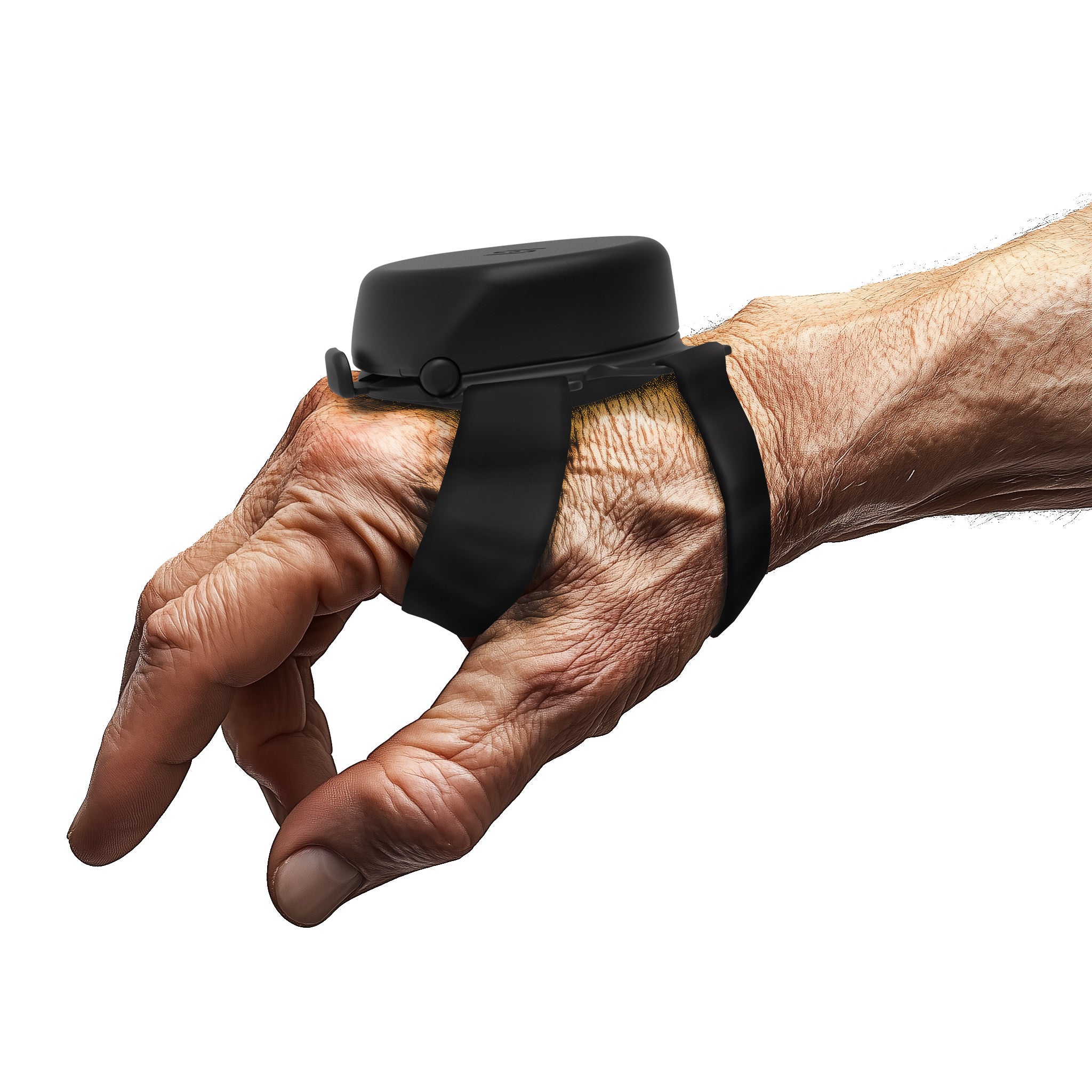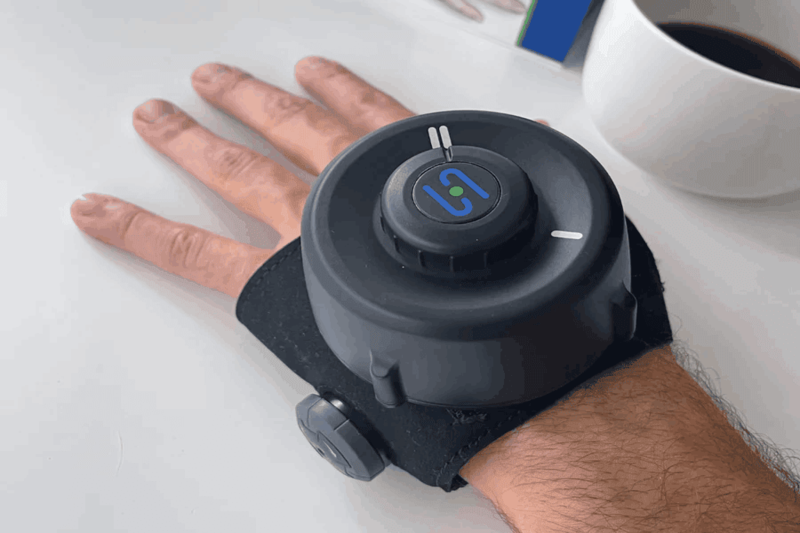In the ever-evolving landscape of medical technology, the future holds immense promise for those living with conditions like essential tremor. As we continue to push the boundaries of what's possible, next-gen innovations are emerging that could revolutionize tremor management. One such innovation is Steadiwear's Tremor Stabilizing Gloves, a groundbreaking product that has already made a significant impact in the field. But this is just the beginning. As we look ahead, we can anticipate a future where technology plays an even greater role in tremor treatment, offering new hope for those seeking to improve their quality of life. In this blog, we will explore these future innovations in tremor management, delving into the exciting potential that lies ahead. From advancements in smart materials to breakthroughs in digital health, the future of tremor management is bright, and Steadiwear is proud to be at the forefront of this transformation.
Understanding Essential Tremor: The Current Landscape and Challenges
Essential tremor, a neurological condition characterized by involuntary and rhythmic shaking, primarily affects the hands and arms, making everyday tasks a challenge. Despite its prevalence, essential tremor is often misunderstood and misdiagnosed, sometimes mistaken for Parkinson's disease due to the shared symptom of tremors. However, the two conditions differ in key ways, with essential tremor typically becoming pronounced during voluntary movements, while Parkinson's disease tremors usually occur when the hands are at rest. Current treatment options for essential tremor include medication, lifestyle changes, and in severe cases, surgery. However, these treatments are not without their limitations and side effects. This is where innovative solutions like Steadiwear's Tremor Stabilizing Gloves come in, offering a non-invasive, drug-free approach to managing essential tremor and paving the way for future innovations in tremor management.
Steadiwear's Tremor Stabilizing Gloves: A Glimpse into the Future of Tremor Management
Steadiwear's Tremor Stabilizing Gloves represent a significant leap forward in the management of essential tremor. These gloves utilize a smart fluid that stiffens in response to the involuntary tremors, thereby providing the user with a steadier hand. The result is a significant reduction in the impact of the tremors on the user's daily activities. The gloves are lightweight and comfortable, designed for all-day wear, and offer a practical solution for those seeking to regain control over their movements. The innovative technology behind these gloves offers a non-invasive, drug-free solution to manage essential tremor, making them a game-changer in the field. With Steadiwear's Tremor Stabilizing Gloves, individuals living with essential tremor have a revolutionary tool at their disposal to help manage their condition and improve their quality of life.
Beyond Gloves: Upcoming Technological Innovations in Tremor Treatment
While Steadiwear's Tremor Stabilizing Gloves are a significant advancement in tremor management, they are just the tip of the iceberg when it comes to the potential of technology in this field. As we look to the future, we can anticipate a range of innovative solutions that could revolutionize the way we approach tremor treatment.
For instance, advancements in wearable technology could lead to devices that not only help manage tremors but also monitor their severity and frequency, providing valuable data that could inform treatment plans. Similarly, breakthroughs in the field of bioengineering could result in the development of smart materials that respond in real-time to the body's movements, offering even greater control over tremors.
Furthermore, the rise of digital health platforms could transform the way we deliver and access tremor treatment. These platforms could provide remote monitoring services, personalized treatment plans, and even virtual reality-based therapies that help individuals manage their condition from the comfort of their own home.
These are just a few examples of the exciting innovations on the horizon in the field of tremor treatment. As technology continues to evolve, the possibilities for improving the lives of those living with essential tremor are virtually limitless.
The Role of Digital Health in Future Tremor Management
Digital health is poised to play a significant role in the future of tremor management. As technology continues to advance, we can expect to see a shift towards more personalized, data-driven approaches to treatment. For instance, wearable devices could be used to track the frequency and severity of tremors in real-time, providing valuable data that can be used to tailor treatment plans to the individual's specific needs.
In addition, digital health platforms could provide a range of services designed to support individuals living with essential tremor. These could include telemedicine consultations, allowing individuals to connect with healthcare professionals from the comfort of their own home. They could also offer access to online support groups, providing a space for individuals to share their experiences and learn from others living with the same condition.
Furthermore, digital health could pave the way for innovative treatment methods, such as virtual reality-based therapies. These could involve the use of VR technology to simulate everyday tasks, helping individuals practice and improve their motor skills in a safe, controlled environment.
Through these and other advancements, digital health has the potential to transform the way we approach tremor management, making treatment more accessible, personalized, and effective.
The Impact of Future Innovations on Quality of Life for Individuals with Tremors
The future of tremor management holds immense promise for improving the quality of life for individuals living with tremors. The innovative solutions and advancements on the horizon have the potential to significantly reduce the impact of tremors on daily activities, independence, and overall well-being.
One of the key impacts of future innovations is the restoration of functional abilities. With advancements in tremor management, individuals will have the opportunity to regain control over their movements, enabling them to perform tasks that were previously challenging or impossible. Simple activities like eating, writing, or using utensils can become more manageable, enhancing independence and restoring a sense of normalcy.
Moreover, these innovations can have a profound effect on mental and emotional well-being. Tremors can often lead to feelings of frustration, embarrassment, and social isolation. However, as future technologies offer more effective tremor management solutions, individuals may experience a reduction in these negative emotions and an increase in confidence and self-esteem. This can lead to improved social interactions, participation in activities, and a greater overall sense of happiness and fulfillment.
Furthermore, the potential for remote monitoring and telemedicine services through digital health platforms can enhance access to care and support for individuals with tremors. The ability to connect with healthcare professionals remotely can provide convenience and timely interventions, ensuring that individuals receive the necessary guidance and support to manage their condition effectively.
In summary, the impact of future innovations in tremor management is poised to revolutionize the quality of life for individuals living with tremors. These advancements offer hope for increased functional abilities, improved mental well-being, and enhanced access to care, empowering individuals to live life to the fullest.
Looking Ahead: The Long-Term Vision for Tremor Management and Treatment
As we peer into the future, it becomes clear that the long-term vision for tremor management holds great potential for transformative advancements. The goal is not just to alleviate the symptoms of tremors, but to ultimately find a cure for these neurological conditions. Researchers and scientists are tirelessly working to unravel the underlying causes of tremors, seeking breakthroughs that could lead to targeted therapies and interventions.
In addition to medical advancements, there is a growing focus on holistic approaches to tremor management. This includes exploring the role of lifestyle modifications, such as exercise, stress reduction techniques, and dietary adjustments, in managing and reducing tremors. Integrative therapies, including physical therapy, occupational therapy, and alternative modalities, are also being investigated for their potential to complement traditional treatments.
Furthermore, the future of tremor management encompasses a commitment to raising awareness and fostering support networks for individuals living with tremors. Advocacy organizations and patient communities are instrumental in providing resources, education, and a platform for individuals to share their experiences and learn from one another.
Through collaboration among researchers, healthcare professionals, patients, and advocates, the long-term vision for tremor management aims to not only enhance treatment options but also advance our understanding of these conditions and work towards improved outcomes and quality of life for individuals living with tremors. By embracing a multidisciplinary approach and leveraging the power of innovation, we can pave the way for a future where tremors are better understood, effectively managed, and ultimately conquered.
Conclusion
In conclusion, the future of tremor management holds tremendous promise for individuals living with tremors. From innovative technologies like Steadiwear's Tremor Stabilizing Gloves to upcoming advancements in digital health and holistic approaches, the landscape of tremor treatment is evolving rapidly. These future innovations aim to enhance the quality of life for individuals by reducing the impact of tremors on daily activities, promoting independence, and addressing the emotional well-being associated with these conditions.
With the ongoing efforts of researchers, healthcare professionals, and advocacy organizations, we can look forward to a future where tremor management is more personalized, accessible, and effective. The long-term vision for tremor management goes beyond symptom relief, striving for a deeper understanding of the underlying causes and working towards a cure. It embraces a multidisciplinary approach that encompasses medical advancements, lifestyle modifications, integrative therapies, and the power of supportive communities.
As we journey into this future, it is essential to continue raising awareness, fostering collaboration, and advocating for individuals living with tremors. By combining scientific progress, technological innovation, and compassionate care, we can create a world where individuals with tremors can lead fulfilling lives, unrestricted by the challenges posed by their condition.
Together, let us embrace the potential of future innovations, stand united in support, and envision a future where tremor management reaches new heights, improving the lives of countless individuals around the globe.


